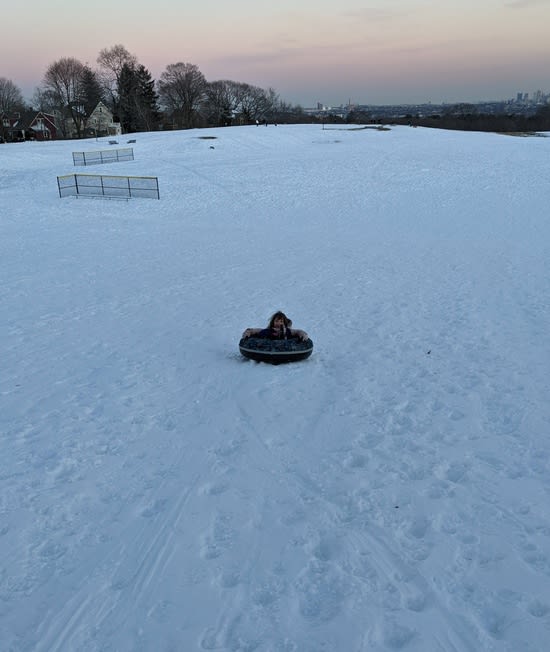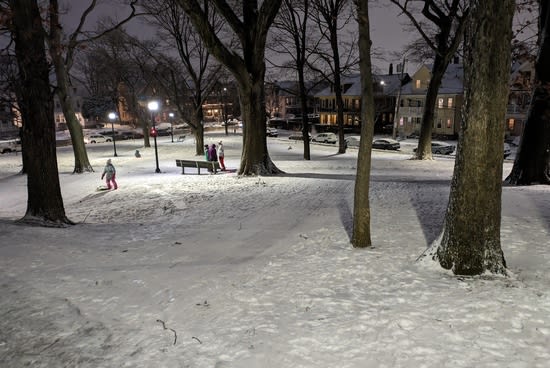A solution involving much more work might be to put something soft around all the trees. Too much work for one person, but maybe if more adults agreed that this is a good idea...
(I saw a skiing hill for kids that had a lot of artificial soft obstacles. The kids had a motivation to navigate around them, but if they hit one, no big deal. Then again, a soft obstacle is different from a soft wrapper around a hard tree.)
One of the hills around here is very steep, leading down to a fence. After someone died, hitting the fence pretty hard (not the first time, just the most recent), they started putting hay bales at the bottom every year.
You could do something like that on this hill, but it gets much less sledding traffic and is much less dangerous than the other one, so it's less clear it's worth it.
No tubes on hills with obstacles. As you mentioned, they don't steer well and often spin to point your head downhill. The seem safer with all that bouncy crash zone. They're not. Plastic sleds are cheap and there's fun to be had from steering them.
What's the issue with tubes if you always bail if (a) you end up rotated so you can't see or (b) you're on track for an obstacle?
(I don't think the 'bounce' makes them safer; not arguing that.)
If you do all of that perfectly, there's no downside.
Kids don't do everything perfectly. So sleds seem way safer.
Except for jumping. Tubes do offer protection from most jumps. Which can cause head impacts.
Source: grew up next to a wooded hill in Northern Michigan where entertainment was scarce.
Some sledding hills are very open, with basically no hazards. As long as you start in a reasonable place there's nothing to run into.

Robbins Farm Park, Arlington MAOther hills are not like this:

Powder House Park, Somerville MASince sleds go fast and collisions are bad, choosing only to sled on obstacle-free hills would be reasonable. But if your kids are going to sled on hills with hazards, what precautions make sense? Here's what we did today:
Bike helmets. Head injuries are especially worrying because of how bad the long term consequences can be, and concussions are cumulative.
Practice bailing out. Before I let them go down on the tube, which they can't steer well, I had them each practice rolling off it to stop.
Feet first. More crumple zone if you do hit something, more ability to see and avoid things. If you're on the tube and you end up backwards, preemptively bail.
This is in addition to the precautions you need on any hill, like being aware of activity uphill (so you can get out of the way) and walking up on the side (so no one will come down at you).
I am a bit conflicted on when sledding on constricted hills is worth it. For us, the slopes near our house do have obstacles, but:
While I think these are enough to outweigh the risks, with the precautions above, possibly I'm not being cautious enough?
Comment via: facebook, mastodon